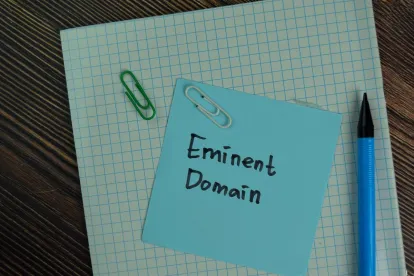When an entity moves to ‘take’ land or property (via the power of eminent domain), all parties involved become entrenched in determinations of what constitutes adequate compensation.
This process is ultimately what a lot of U.S. eminent domain proceedings boil down to; that is, the question of what a ‘taking’ authority must pay to the property owner in exchange for taking the property in the first place. Let’s start by asking the most important question: when does the condemning party have to pay up?
When Should Compensation Be Paid?
I do recommend looking to your state guidelines for more specific regulations, but in Ohio the general rule is that compensation must be paid before a property can be taken.
Here’s the exact wording, if you’re curious:
(A) As soon as the agency pays to the party entitled thereto or deposits with the court the amount of the award and the costs assessed against the agency, it may take possession; provided, that this shall not be construed to limit the right of a public agency to enter and take possession, as provided in section 163.06 of the Revised Code. When the agency is entitled to possession the court shall enter an order to such effect upon the record and, if necessary, process shall be issued to place the agency in possession.
In short, condemning or taking authorities must pay compensation before they can even start work on a given property or public-use project. Compensation is determined by the jury and cannot be accepted as a simple estimate. The only way for work to start sooner is if the taking authority and the property owner in question agree on the amount of compensation and settle outside of court.
Important note: Many of us are familiar with situations involving ‘quick takes,' which are an exception to the general rule and allow the taking authority to deposit the appraised value of the property rights being taken and then take immediate possession. However, the quick take procedure is only available in narrowly defined situations.
How Will Compensation Be Determined?
Most people are familiar with the concept of ‘just compensation,’ which is what the constitution requires be paid to a property owner whose land is taken by eminent domain. Just compensation actually has two components, known as compensation and damages.
Compensation: Compensation is considered the value of the land that is actually taken, such as the strip along a property’s road frontage that is needed for a road widening project. In a total taking scenario, where the government takes the entirety of a property, compensation is all that needs determined. There are no damages.
Damages: Damages – which we in the industry often term ‘damages to the residue’ – are considered to be any impact to the part of the property (residue) that’s left behind in a partial-taking scenario, where the government takes only a part of a property, leaving the rest for the property owner to keep.
Put differently, damages are the extent to which the remaining property has less value because of its severance from a given property, or due to the regulation of that property.
When Do Damages Affect the Total Compensation Amount?
The final key difference between compensation and damages is whether they are to be considered in partial or total taking scenarios. In my experience, when you’re in a total taking scenario you must only worry about compensation, while with partial takings you must keep a critical eye on compensation and damages.
Both compensation and damages are determined by looking to the ‘fair market value’ of the property in question. According to Masheter v. Ohio Holding Co. (1973), Fair Market Value is the total amount of money obtainable via the open market at the time of the property’s voluntary sale. It is the amount that a willing purchaser would pay to a willing seller if both parties were fully informed of the use value of said property.



 />i
/>i
